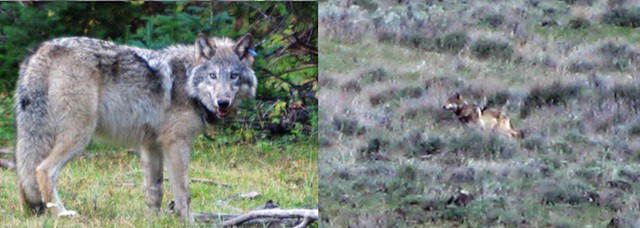Single, Lonely Wolf Seeks Sex and Real Estate In California

A wild gray wolf continues to wander all over Northern California, a year after crossing the state line. The wolf, named OR-7 by wildlife biologists because he’s the seventh male in the Oregon pack that has been unwillingly fitted with a radio-satellite collar, has traveled more than 2,000 miles back and forth across the top of California in search of a mate and its own territory.
Like many young males today, OR-7 has a Twitter account. But that is not why cow farmers in rural parts of Northern California are so angry. Cow farmers hate any kind of predator and any kind of wild nature — the last wild wolf in California was shot dead by a trapper “intent on making the West safe for cattle” in 1924.
But this wolf, OR-7, he does not like to eat stinky cattle. And like many weary road travelers, he hates Interstate 5. These are some of the insights gained from following the wolf’s progress since it broke off from the Oregon pack and entered California on December 28, 2011. Since the gray wolf was reintroduced to the northern Rocky Mountains in the 1990s, packs have grown and spread out to Idaho and Oregon.
Just before Christmas, 25 conservation groups from the states of Washington, Oregon and California launched a new plan to restore wolves to the West Coast:
The Pacific Wolf Coalition envisions populations of wolves restored across their historic habitats in numbers that will allow them to re-establish their critical role in nature and ensure their long-term survival. The announcement of the Pacific Wolf Coalition coincides with the one-year anniversary of the first wolf, OR-7, in California in nearly 90 years.
Wolves are making a comeback in the Pacific West. Here, as elsewhere in the lower 48, wolves were driven to regional extinction decades ago.
The world hasn’t ended since these few packs of wolves have begun to repopulate the west, not even for cattle growers. (Ranchers who do lose livestock to wolves are compensated.) And because the non-cattle world needs large predators, California’s fish-and-wildlife officials are preparing for the inevitable presence of entire wolf packs in the state’s open spaces. A petition seeks to force California wildlife officials to give the wolves official protected status in the state — whether the wolf will go the way of medical marijuana (legal) or gay marriage (illegal) will be decided later this year.
Photos of OR-7 via the California Department of Fish and Wildlife.
